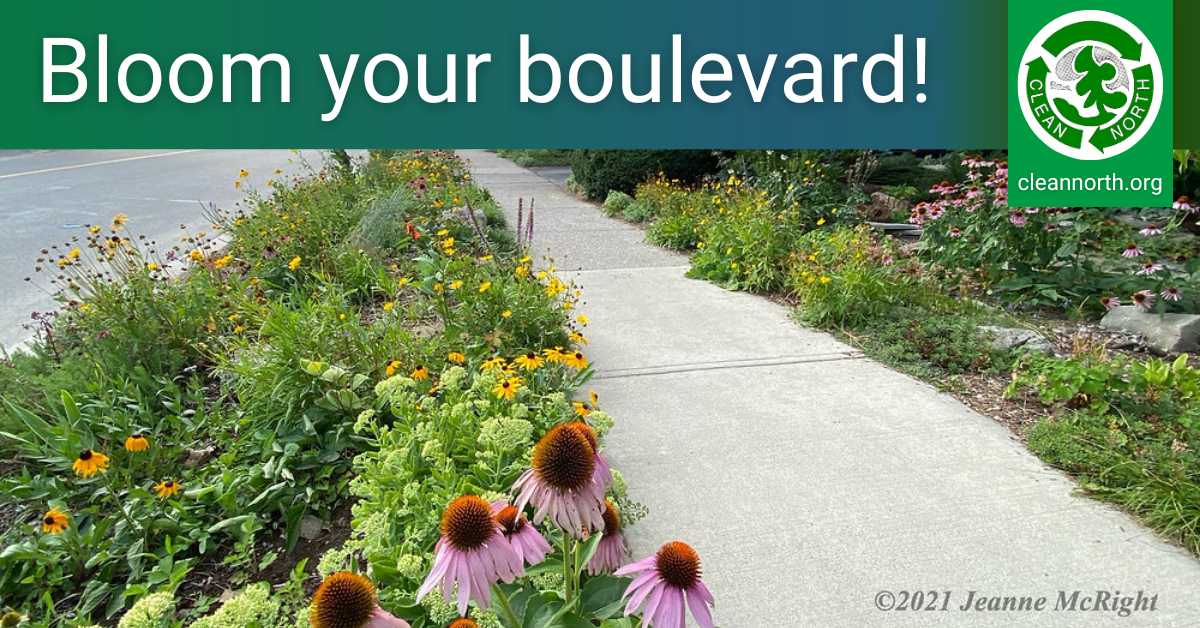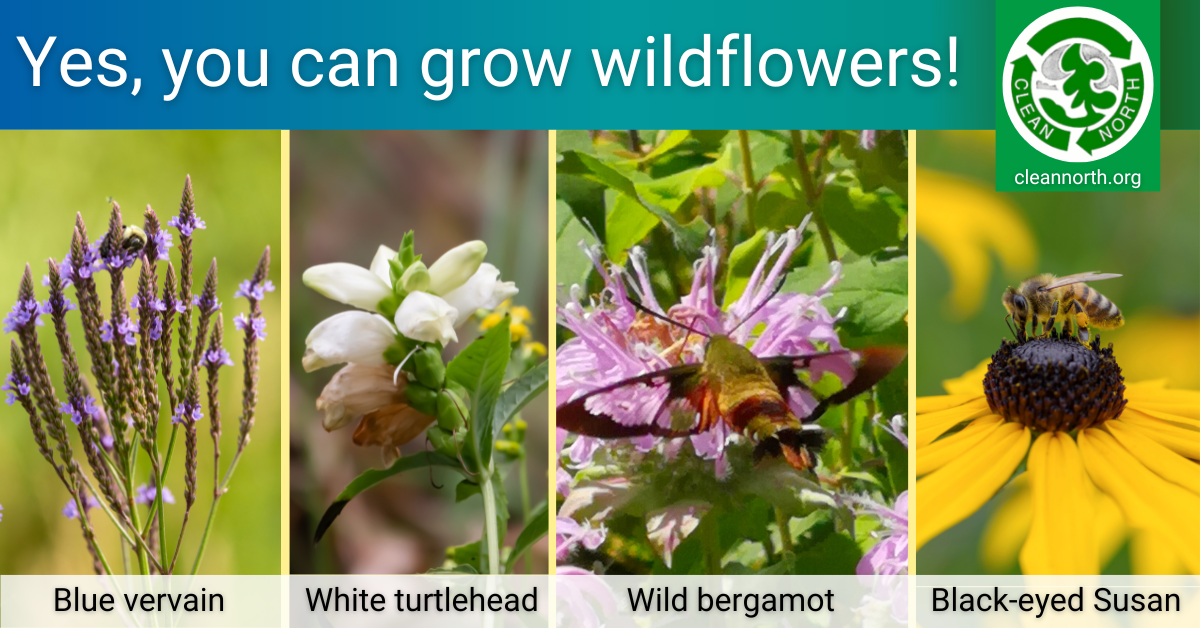
It is now legal to plant a boulevard garden in Sault Ste. Marie! Read this Sootoday article for details. A boulevard garden is one planted in the strip of grass along your curb, with having mostly or all native plants as a key goal. This area technically belongs to the city, but home- and property owners have to maintain it. The driving force behind this bylaw is Lisa Bondar, a Sault resident who is an avid gardener and a member of the Sault Ste. Marie Horticulture Society. Lisa says, “We need to do more as a community to fight climate change, and boulevard gardens look beautiful! Many other cities around the world and southern Ontario now are allowing these gardens. They just make sense.”
How did the boulevard garden initiative get started?
Lisa and a group of her neighbours received a green grant from the City of Sault Ste. Marie to promote climate change action, which eventually led to her championing a boulevard garden bylaw. She notes, “I wanted to help the bees and birds by seeing pollinator gardens planted throughout our city.”
Lisa rallied a group of people and reps of several community groups to the cause, including Clean North, the Sault Naturalists, the Sault Ste. Marie Horticultural Society, the David Suzuki Foundation-associated Algoma Butterfly Rangers, Sault Climate Hub, and Algoma University. In addition, she recruited two city councillors to champion the bylaw proposal.
Several meetings were held, and many other communities’ boulevard bylaws were reviewed. Lisa especially liked the City of Oshawa’s bylaw so contacted their policy department to get advice. She also found consulting with Emily Cormier, the City of Sault Ste. Marie’s environmental coordinator, to be helpful.
“Next we developed a resolution for the city to explore a boulevard garden bylaw, and it was brought to city council, where they voted unanimously for it and then more recently for the bylaw!” Lisa explains. “I was surprised but pleased that all councillors voted in favour of this great initiative.“
To encourage boulevard gardens, we almost must encourage garden centres to stock more native plants and gardeners/homeowners to choose natives. (This is something you can help with: Contact your fave garden centre and ask them to stock more native plants.)
Lisa adds, “We also want to educate the public about invasive plants, encourage greenhouses to not sell them, and expand this bylaw to include front and backyards.”
One caveat about boulevard gardens is they do require some looking after. You may still need to water them some, especially when plants are young; they may require weeding to allow native plants to grow up and thrive; and you may need to choose plants carefully to ensure they can tolerate some road salt and don’t get so tall they create a traffic hazard.
10 reasons to plant a boulevard garden
- Help critters: If you build it, they will come! These gardens can provide food and habitat for pollinators, birds, and other wildlife, increasing biodiversity, providing a habitat network across the city, and helping to mitigate climate change. Populations of many insect and bird species have been falling, so every bit of native plant garden helps!
- Reduce water and lawn chemical use: By replacing a large strip of lawn (ideally with drought-resistant native plants), you will reduce the need to water and use chemical fertilizers/herbicides (yes, we know cosmetic use of herbicides is illegal—we also know many people still use them).
- Teach people about sustainability: These gardens can showcase sustainable landscaping techniques such as xeriscaping (landscaping designed to slash the need to water) and native plant gardening, inspiring others to adopt similar practices.
- Beautify our city: A well-designed and maintained boulevard garden can add beauty and visual interest to an otherwise barren and boring urban space—the curbside.
- Improve air quality: Plants absorb carbon dioxide and release oxygen, helping to improve air quality and mitigate pollution.
- Reduce water runoff: Planting up your boulevard will help absorb rainwater, reducing pressure on the sewer system and the risk of flooding.
- Reduce erosion: Especially on sloped areas, plants help to stabilize soil and prevent erosion.
- Bring neighbours together: Boulevard gardening can serve as a focal point for community involvement, with neighbors coming together to share ideas, plan, share seeds/plants, and maintain.
- Encourage active living and curiosity about gardening: Beautifying curbsides can make walking and cycling more interesting. One of our volunteers who already has a boulevard garden says residents of her area make a point of walking or cycling by her house because they love seeing her flowers! Access to beautified green spaces has also been linked to improved mental health.
- Reduce maintenance costs: Once established, boulevard gardens often require less maintenance than traditional turf grass, saving time, money, and resources.
Questions about boulevard gardens?

- Review the rules the city has laid out for boulevard gardens
- Check out Clean North’s green gardening resources, including advice on how to make space for a new garden (getting rid of sod), Gardening With Wildflowers, and the Sault/Algoma Grow Me Instead Guide to invasive plants and native alternatives
- Email us at info@cleannorth.org
Some excellent (shorter) native/[pollinator plants that would do well in a boulevard (those marked with an asterisk may not overwinter well but are easy to grow again via collecting seed and winter sowing):
- Anise hyssop*
- Black-eyed Susan (Rudbeckia fulgida or hirta)
- Bottlebrush grass
- Canada anemone
- Eastern red columbine
- Golden Alexander
- Grey goldenrod
- Hairy beardtongue
- Heath aster
- Little bluestem grass
- Nodding onion
- Pale purple coneflower
- Prairie dropseed
- Prairie smoke
- Purple coneflower
- Purple prairie clover
- Silverweed
- Spotted bee balm*
- Threadleaf coreopsis
- Wild geranium
- Wild strawberry
- Zigzag goldenrod




